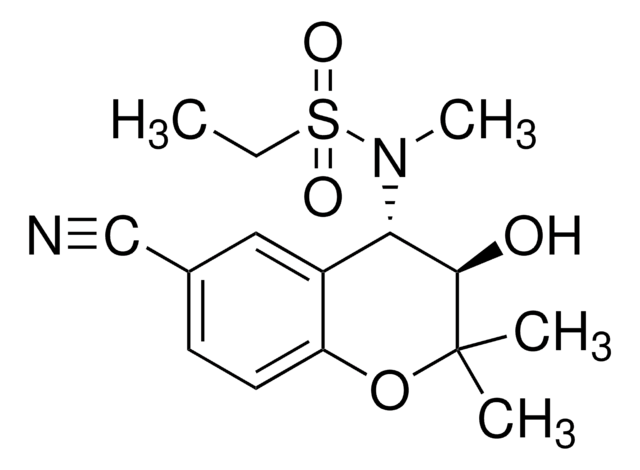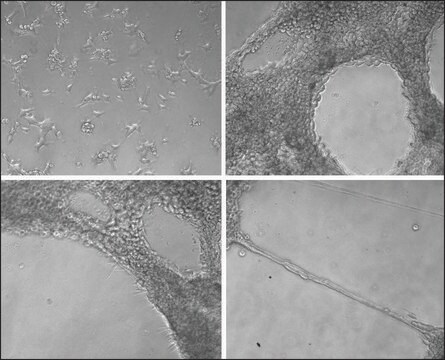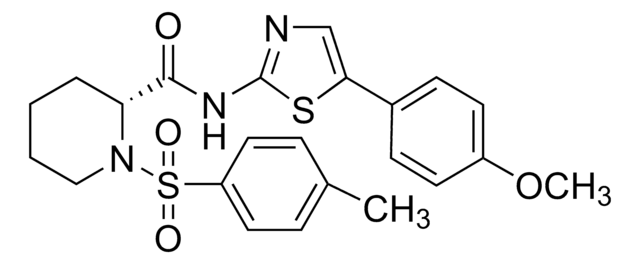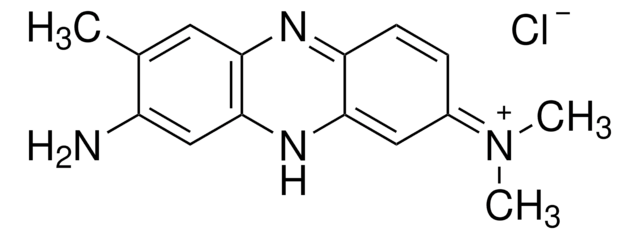Kluczowe dokumenty
SML2354
HMR-1556
≥98% (HPLC)
Synonim(y):
(3R,4S)-(+)-N-[3-Hydroxy-2,2-dimethyl-6-(4,4,4,-trifluorobutoxy)chroman-4-yl]-N-methylmethanesulfonamide, Chromanol HMR 1556, HMR 1556, HMR1556, N-[(3R,4S)-3,4-Dihydro-3-hydroxy-2,2-dimethyl-6-(4,4,4-trifluorobutoxy)-2H-1-benzopyran-4-yl]-N-methylmethanesulfonamide
About This Item
Polecane produkty
Próba
≥98% (HPLC)
Formularz
powder
aktywność optyczna
[α]/D +2 to +3.5°, c = 0.1 in methanol
kolor
white to beige
rozpuszczalność
DMSO: 2 mg/mL, clear
temp. przechowywania
2-8°C
ciąg SMILES
CC1([C@@H]([C@H](C2=CC(OCCCC(F)(F)F)=CC=C2O1)N(C)S(C)(=O)=O)O)C
InChI
1S/C17H24F3NO5S/c1-16(2)15(22)14(21(3)27(4,23)24)12-10-11(6-7-13(12)26-16)25-9-5-8-17(18,19)20/h6-7,10,14-15,22H,5,8-9H2,1-4H3/t14-,15+/m0/s1
Klucz InChI
SRZRLJWUQFIZRH-LSDHHAIUSA-N
Działania biochem./fizjol.
Kod klasy składowania
11 - Combustible Solids
Klasa zagrożenia wodnego (WGK)
WGK 3
Temperatura zapłonu (°F)
Not applicable
Temperatura zapłonu (°C)
Not applicable
Wybierz jedną z najnowszych wersji:
Certyfikaty analizy (CoA)
Przepraszamy, ale COA dla tego produktu nie jest aktualnie dostępny online.
Proszę o kontakt, jeśli potrzebna jest pomoc Obsługa Klienta
Masz już ten produkt?
Dokumenty związane z niedawno zakupionymi produktami zostały zamieszczone w Bibliotece dokumentów.
Nasz zespół naukowców ma doświadczenie we wszystkich obszarach badań, w tym w naukach przyrodniczych, materiałoznawstwie, syntezie chemicznej, chromatografii, analityce i wielu innych dziedzinach.
Skontaktuj się z zespołem ds. pomocy technicznej







